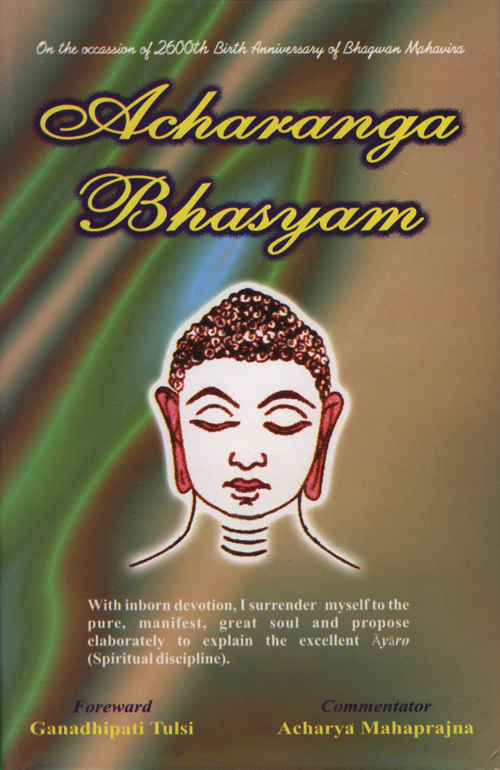- Prose - Cūrṇi-like works, e.g., the fourteenth chapter titled 'brahmacarya' of the first Śrutaskandha of the Sūtrakṛtāṅga Sūtra.
- Poetry - E.g. the sixteenth chapter of the first Śrutaskandha of the Sūtrakṛtāṅga, titled 'Gāthāṣoḍaśaka'.
- Story - Narrative, e.g. the Uttarādhyayana, the Ṛṣibhāṣita, the Jñāta.
- Lyrical - containing musical note, e.g. the eighth chapter of the Uttarādhyayana, titled, 'Kāpilῑya'.
The Daśavaikālika Niryukti mentions two styles of presentation [2] - grathita and prakῑrṇaka. The former denotes styles of composition while the latter is the style of narrating the story.[3]
The former has four divisions: prose, poetry, lyrical and mixed.[4]
The Prakῑrṇaka in Daśavaikālika Niryukti forms the content in the Sūtrakṛtāṅga Cūrṇi. Brahmacaryādhyayana has been placed in prose category in the Sūtrakṛtāṅga. But in the Daśavaikālika Cūrṇi, it has been categorized as 'caurṇa'[5] as pointed out by Haribhadra.[6] The categorization of Daśavaikālika Cūrṇi appears to be logical.
While commenting on caurṇa-pada [7] of Niryukti, the Niryuktikāra has interpreted it as arthabahula (having multiple shades), mahārtha (deep meaning), hetu (with definite cause), nipāta (preposition), upsarga (grammatical suffix), bahupāda (many-verses). According to him, the verse, which does not have any 'pāda' is prose, but that one, which has many pādas along with prose is called 'caurṇa'. The Ācārāṅga is full of many padas and is, therefore, a composition of 'caurṇa' style.
It is a matter of surprise that inspite of the fact that both the Samavāyāṅga [8] and and the Nandῑ [9] have references to numerous veṣtakas and ślokas in Ācārāṅga, and also that both the Cūrṇi and the Vṛtti deem it as the composition in caurṇa style, the Jain scholars have not paid attention to the miscelleneous pādas in Ācārāṅga. The Ācārāṅga consists of a good number of poetic verses along with prose, as Dr. Schubring has pointed out in the text edited by him. He has compiled the poetic verses separately.[10] Upto the seventh uddeśakas of the eight chapter of the Ācārāṅga, the narration is in 'caurṇa' style, the eighth uddeśaka and the 9th chapter are all in poetry. In the Ācāracūlā, it is predominantly prose style up to the fifteenth chapter, with poetic verses used intermittently. The sixteenth chapter is all poetic.
Sūtrakṛtāṅga Cūrṇi, p.7: taṃ cauvvidhaṃ, taṃjahā - gadyaṃ padyaṃ kathyaṃ geyaṃ. gadyaṃ - cūrṇigraṃthaḥ brahmacaryādi, padyaṃ gāthāsolasagādi, kathanῑyaṃ kathyaṃ jahā uttarajjhayaṇāṇi isibhāsitāṇiṇāyāṇi ya, geyaṃ ṇāma sarasaṃcāreṇa jadhā kāvilijje 'adhuve asāsayaṃmi saṃsāraṃmi dukkhapaurāe.'
nomāugaṃpi duvihaṃ, gahiyaṃ ca painnayaṃ ca boddhavvaṃ.
gahiyaṃ cauppayāraṃ, painnagaṃ hoi ṇegavihaṃ..
Daśavaikālika Hāribhadrῑya Vṛtti, patra 87: grathitaṃ racitaṃ baddhamityanarthāntaram, ato'nyatprakῑrṇakaṃ - prakῑrṇakakathopayogijñānapadamityarthaḥ.
gajyaṃ pajjaṃ geyaṃ, cuṇṇaṃ ca cauvvihaṃ tu gahiyapayaṃ.
tisamuṭṭāṇaṃ savvaṃ, ii beṃti salakkhaṇā kaiṇo..
 Acharya Mahaprajna
Acharya Mahaprajna

